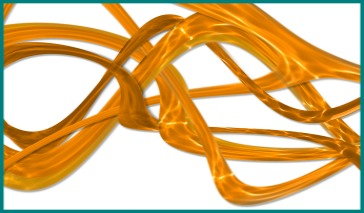Endovenous thermal ablation (EVTA) is an ultrasound-guided treatment for varicose veins. It involves catheterization and the use of either heat or a laser to seal off veins. It’s a minimally invasive procedure that can be performed in an outpatient setting in a hospital or in a doctor’s office. EVTA can be used for cosmetic purposes to get rid of varicose veins, or as a medical procedure to relieve pain and other symptoms.
How does EVTA work?
EVTA works by sealing off varicose veins from the inside. This causes the vein to fade away in a few weeks’ time, and the blood to the legs is diverted through other veins. The heat or laser energy basically cauterizes the vein at both ends. Once the flow of blood through the vein is stopped, it collapses and becomes useless.
What is endovenous thermal ablation used for?
Endovenous thermal ablation is used to treat bulging surface varicose veins. These veins lead to a condition called venous insufficiency, in which the veins don’t properly function. Circulatory problems like this in the legs can cause pain and swelling around the veins. Poor circulation can also cause unsightly discoloration, sores, skin irritation or inflammation. A successful EVTA treatment can help to relieve all of these symptoms.
What areas of the body does EVTA treat?
Varicose veins typically occur on the lower extremities. Endovenous thermal ablation is typically performed on the legs.
What are the advantages of EVTA over other similar treatments?
EVTA has several advantages over vein stripping and other surgical treatments for varicose veins. No stitches are required to finish the operation, and it leaves no scarring. Patients experience very little discomfort during the treatment, and recovery times are very fast. EVTA has been shown to have high success rates and low rates of recurrence for varicose veins.
Who is a candidate for endovenous thermal ablation?
People who have health problems due to varicose veins are generally good candidates for EVTA, as well as those who simply want the procedure for cosmetic reasons. EVTA should not be administered to patients who are pregnant or breastfeeding. Liver problems are another contraindication. If a patient has venous insufficiency to the point where they won’t be able to wear compression stockings during the healing phase, they should not receive EVTA. If the doctor doesn’t think the patient’s supportive veins will be able to redirect blood flow after the procedure, another treatment method may be recommended.
How is EVTA performed?
The treatment begins with an ultrasound to confirm the location of the varicose veins to be treated. The leg is then disinfected and a local anesthetic is administered. The doctor will make a tiny incision to insert a catheter. Ultrasound is used to guide the catheter into the appropriate location in the vein.
A laser fiber or a radiofrequency probe is then inserted through the catheter. Depending on the type of EVTA, a laser or radiofrequency heat is used to seal off the varicose vein. The catheter is removed and steristrips or other small bandages are used to protect the incision site. No stitches are required. Endovenous ablation therapy takes less than an hour to perform, and the patient can go home the same day.
What is the recovery like?
Compression stockings will be worn by the patient for the first night after the procedure. After that, the stockings should be worn every day for the next two weeks or so. The patient will have a follow-up exam in about one week. An additional ultrasound will be performed to confirm that the operation was a success. It’s only in rare cases that a second EVTA treatment is required for the same vein. If additional problem veins are found, a simpler procedure like ambulatory phlebectomy can be used to seal them off.
Walking and light physical activity should be performed on a regular basis to help the healing process. Heavy physical activities should be avoided at the doctor’s instruction. There may be some minor soreness and bruising, but this can be treated with over the counter pain medicine.
What will the results be like?
Swelling and pain from the varicose veins will go away after an EVTA procedure. The discoloration associated with the veins will clear up over the next few weeks as they fade away. The incision site should be fully healed within six months, and scarring should be very minimal if it happens at all. Circulatory problems from venous insufficiency should also be relieved after the treatment.
What are the risks of endovenous thermal ablation?
There are several potential risks and side effects to an endovenous thermal ablation procedure. Temporary pain and swelling are common, but these resolve within a few days. Discoloration on the skin can also happen after EVTA. It goes away in several months, but in some cases it can take up to a year for this to happen. Minor burns are possible from the heat treatment, which could require secondary treatment. Patients are usually provided with eye protection, because laser therapy could cause damage to the eyes.
The ultrasound checkup that happens one week after the treatment will be used to look for signs of deep vein thrombosis. This is a very rare complication that can lead to a blood clot traveling to the lungs. It can also cause permanent swelling of the leg (post-phlebitic syndrome).
Nerve trauma is another possible complication from EVTA. Surrounding nerves can sometimes be damaged by the heat, which can cause numbness in the affected area. It often goes away in a few weeks or months, but in some cases it can result in permanent numbness.
Even though endovenous thermal ablation is an effective treatment, there is always a chance that additional varicose veins can develop down the road. Lifestyle changes can help prevent their occurrence. Follow the doctor’s advice to ensure the best results.
Reviewed February 8, 2017


